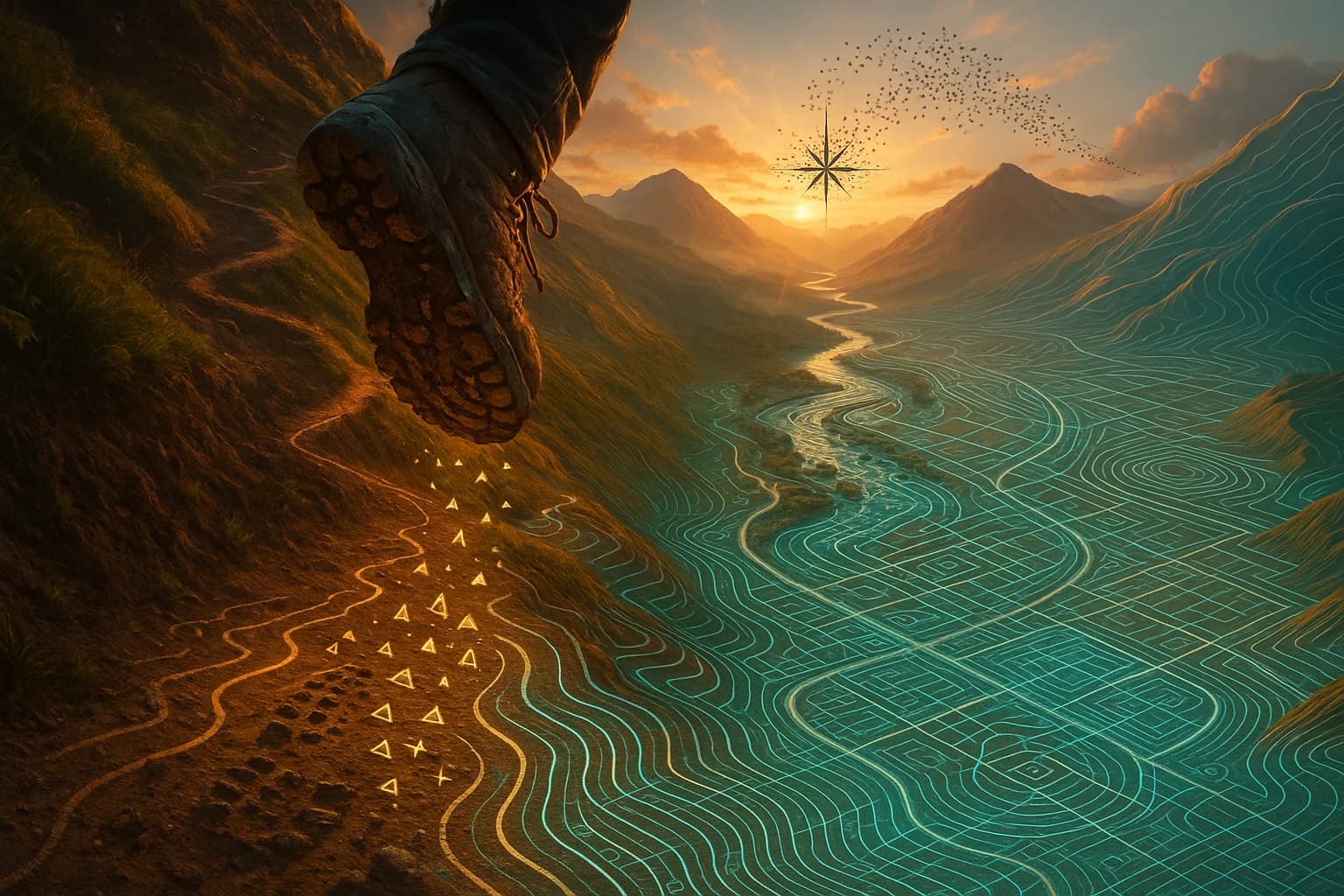Every Misstep Becomes the Next Landmark

Turn each misstep into the next corner of your map. — Kenzaburo Oe
The Cartographic Metaphor
At the outset, Oe’s line invites us to see mistakes not as dead ends but as pivots—corners where the path bends and a new horizon appears. A map grows by tracing boundaries, naming contours, and marking unexpected turns; likewise, a life expands when each misstep is drafted into its geometry. The “corner” is not a retreat but a redirection, a place where perspective changes and routes multiply. In this sense, the map is never finished. Each wrong turn captures information we could not have gathered from a straight road. By converting error into topography—notes, sketches, procedures—we transform raw experience into guidance. The result is not a flawless itinerary but a living chart that makes the next decision more navigable.
Oe’s Witness to Reframing
From there, Oe’s own work models the transformation he prescribes. In A Personal Matter (1964), he channels a father’s crisis at the birth of a brain-injured child into a truth-telling narrative, refusing both denial and despair. The seeming misstep becomes a corner: painful, yes, but also a turn toward responsibility and tenderness. Later, A Healing Family (1996) shows how caregiving and art—his son Hikari became a composer—reconfigure the family’s terrain. These books do not romanticize suffering; rather, they demonstrate narrative as cartography. By naming the turn, Oe maps it, and by mapping it, he makes it traversable for others.
Exploration’s Productive Detours
Turning to history, navigation has always relied on corrections made visible. Portuguese pilots blended dead reckoning with coastal sightings, converting drift and error into annotated charts. Closer to our era, Apollo 13 (1970) converted catastrophe into procedure: the crew’s improvised carbon-dioxide filter and trajectory burns yielded checklists that reshaped NASA playbooks. The near-failure became a sharp corner on humanity’s map of spacefaring. Even in invention, detours deliver landmarks. Spencer Silver’s “too-weak” adhesive (3M, 1968) found its use when Art Fry needed removable bookmarks, becoming Post-it Notes (1980). The initial misfit defined the edge cases; the edge cases defined the product. Thus, detours are not wasted miles but surveyed ground.
Brains That Learn by Turning
Meanwhile, psychology and neuroscience clarify why corners matter. Error-based learning treats mistakes as signals that update internal models; reinforcement-learning theory formalizes this with prediction errors that sharpen future choices. Carol Dweck’s work on growth mindset (2006) echoes this, showing how beliefs about change shape whether errors are mined or ignored. More concretely, we carry maps inside us. Edward Tolman’s “cognitive maps” (1948) anticipated discoveries of hippocampal place cells (O’Keefe, 1971; O’Keefe & Nadel, 1978) and entorhinal grid cells (Moser & Moser, 2005), suggesting that experience tiles space into meaningful coordinates. A misstep, then, is a data point; the corner is where the grid refines and the route improves.
Techniques for Charting the Turn
Practically speaking, turning missteps into corners requires tooling. Blameless postmortems (Google SRE, 2016) convert incidents into actionable narratives, while After Action Reviews ask four linked questions: what happened, why, what will we sustain, what will we change. Gary Klein’s pre-mortem (Harvard Business Review, 2007) anticipates corners before we collide with them. At the personal level, implementation intentions—if-then plans (Peter Gollwitzer, 1999)—encode new turns: “If I miss a deadline, then I schedule a recovery block and notify stakeholders within 15 minutes.” Journals and version-control-style changelogs make the cartography visible, so lessons do not evaporate with the adrenaline.
Boundaries: When Not to Turn
Finally, not every error deserves celebration. Safety cultures emphasize fail-safe rather than fail-blind design, and James Reason’s “Swiss cheese model” (1990) shows how stacked defenses reduce systemic harm. Medicine’s morbidity and mortality conferences—as popularized for lay readers in Atul Gawande’s Complications (2002)—model accountability that privileges patients over professional ego. The goal is antifragility (Nassim Nicholas Taleb, 2012): systems that gain from volatility while protecting the vulnerable. Ethical cartography means we learn aggressively from small failures but engineer out catastrophic ones. In that balance, each misstep can still become a corner—just not at someone else’s undue expense.